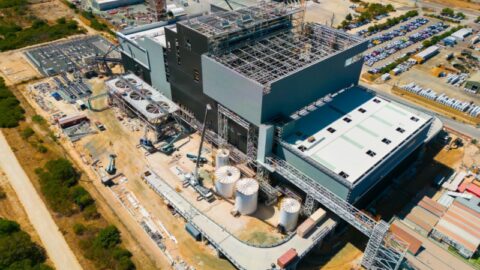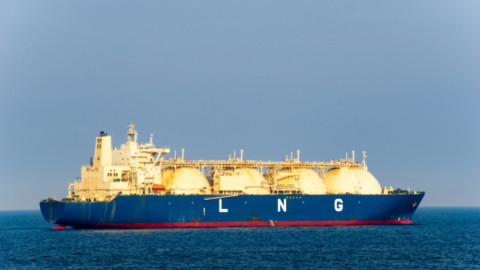by Lauren DeLorenzo, Journalist, Energy magazine
Due to emerging technologies, market factors and Australia’s federal priorities, there has been a huge surge of interest in positioning hydrogen as the fuel of the future. But what will the future of hydrogen actually look like?
According to a PwC analysis, there are over 90 hydrogen projects in the works in Australia, with a collective, conservative estimate of over $250 billion in investment.
There’s no doubt that the sector is widely seen as an opportunity to build economic growth, establish export supply chains and reduce emissions.
The Federal Government has outlined the steps to make Australia’s hydrogen industry a major global player by 2030, with Australia’s National Hydrogen Strategy setting up the sector as a priority for investment and growth.
But establishing the industry as a major global force is dependent on a number of constantly changing factors, such as production costs, transport costs, partnerships and regulations.
Here, we look at how these factors are expected to change in the future, and what it will mean for the trajectory of hydrogen in both domestic and international markets.
How much will it cost?
Green hydrogen, which is created by splitting water into hydrogen and oxygen through electrolysis, produces significantly less emissions than fossil fuel-based hydrogen production.
The good news is that with Australia’s abundant land and resources, we are well-positioned to produce globally competitive green hydrogen.
The bad news is that currently, the cost of large-scale electrolysers is standing in the way of widespread production. But that is expected to change.
A PwC Australia report, Getting H2 right: Success factors for Australia’s hydrogen export industry, anticipates a steep drop in Australia’s green hydrogen production costs by 2040. In fact, green hydrogen is expected to become the joint-lowest cost fuel globally, becoming cost-competitive with grey hydrogen between 2030 and 2040.
Year AUD Cost per kilogram
2025 $5.70–$6.10
2030 $4.10–$4.50
2040 $2.00–$2.45
2050 $1.65–$2.05
PwC Australia Integrated Infrastructure partner, Lachy Haynes, highlighted a number of factors that would help reduce the price of green hydrogen.
“To drive down the cost of hydrogen production, the industry must focus on overcoming the cost of large-scale electrolysers while continuing to drive down the price of our internationally competitive renewable energy,” Mr Haynes said.
“Over the longer term, there is great potential for Australia to play a leading role in a globally traded hydrogen market.
“Australia must put this opportunity at the forefront to demonstrate its intent and conviction in a green hydrogen future, or risk innovation and investment being deployed elsewhere.”
The factors driving cost changes
As green hydrogen projects grow in scale around the world, confidence is expected to grow in financing improved manufacturing facilities for electrolysers. Increased investment in research and development of electrolysers, in addition to better access to equipment, is also expected to bring down costs of electrolysers, and of green hydrogen by extension.
The Clean Energy Finance Corporation’s 2020-21 Annual Report shows that current electrolyser costs of $1.1 million per megawatt are expected to drop to around $500,000 per megawatt by 2050.
Meanwhile, new technological developments are also expected to drive down electrolyser costs, with innovations in electrocatalysts and fuel cells increasing the capacity and efficiency of these systems.
On top of these changes, a decrease in costs of other forms of renewable energy, such as low-cost solar and wind, will also drive down the cost of green hydrogen production. This is because electricity supply represents over half of green hydrogen production costs.
Developers can look at reducing production costs by considering how to best size the electrolyser, the choice of technology and the best location for the project, where there is easy access to resources such as water supply and export infrastructure. Investing in export infrastructure
As Australia’s hydrogen sector looks to prove its value in the global supply chain, investing in transport infrastructure will become increasingly vital.
“For nations such as Japan and South Korea, who want to reduce their emissions but don’t have the renewable energy capacity domestically to meet those needs, importing green hydrogen is an increasingly attractive opportunity,” Mr Haynes said.
“Other energy-rich nations are racing to capture this opportunity, so there’s no time to waste. We need a timely and robust regulatory framework that will give industry the confidence to develop the infrastructure, reputation, people and export pathways that will ensure we are globally competitive.”
The location of the hydrogen project will greatly factor into transport costs, and project developers should consider whether transport costs outweigh the advantages of the selected location.
The PwC report found that although the Federal Government’s seven priority regional hydrogen hubs all have access to port infrastructure, further coordination is needed to reach the full cost-effective potential of hydrogen export infrastructure.
Adapting to new forms of hydrogen transport
This coordination must cater for the major forms hydrogen exports can take, each with its own challenges and advantages. Liquified hydrogen, which is cooled to -253o C and transported in specially designed ships, is effective in that it does not have to be converted back to a hydrogen molecule once it reaches its destination. However, this form of hydrogen export requires costly infrastructure and technology to transport, and hydrogen boil-off can occur during shipping.
Another common method is combining hydrogen and nitrogen to form ammonia, which can then be transported. Although transporting hydrogen in this form is much simpler in terms of the technology and infrastructure needed, it requires significant processing to extract the hydrogen from the ammonia once it arrives.
When hydrogen is added to toluene, it becomes a liquid organic hydrogen carrier called methylcyclohexane, which can be transported at ambient temperature and pressure. This also requires significant processing to extract hydrogen once it reaches the destination, however, toluene can also be captured for reuse in this process.
Each form has different infrastructure requirements and associated costs. Emerging technologies, such as compressed hydrogen tankers, may also increase efficiency and reduce costs in the future.
“For investors, the complex supply chain considerations for hydrogen projects present more challenges than core infrastructure assets,” Mr Haynes said.
“Many hydrogen export projects currently under development have formed consortia bringing together the requisite industry knowledge, skillsets and delivery capability.”
According to the PwC report, forming project consortia reduces construction, technology, market and offtake risks, and teaming up with credible export partners can bolster investor confidence.
Policy challenges for hydrogen’s future infrastructure
As Australia plans for a growing hydrogen sector, changes in its regulatory framework will be required to make the most of existing infrastructure and assets.
“Beyond the physical infrastructure required across the renewable hydrogen value chain, it is the ‘soft’ infrastructure – in other words, the regulatory and social infrastructure – that is the binding ingredient to accelerate the uptake and growth of green hydrogen in Australia,” Mr Haynes said.
Many proposals suggest using existing natural gas infrastructure to transport hydrogen and other renewable gases, and to blend biogas into those networks. However, the national gas regime did not account for this possibility when it was created, and thus amendments need to be made to allow hydrogen into current gas networks.
In August 2021, Energy Ministers agreed to amend the national gas regulatory framework to include hydrogen, biomethane and other renewable gases.
The Australian Energy Market Commission (AEMC) has since released draft recommendations to expand existing gas market frameworks to spur further trade, investment and innovation.
The proposed recommendations would:
» Extend the economic regulatory framework
» Extend market transparency with new Australian Energy Regulator (AER) gas price reporting functions, and further requirements of the Gas Statement of Opportunities, the Victorian Gas Planning Report and the Gas Bulletin Board
» Adapt the Victorian declared wholesale gas market (DWGM) to include distribution connected facilities that can supply natural gas, low-level hydrogen blended gas, biomethane and other renewable gases
» Enable consumers to be informed about the transition to natural gas equivalents
» Allow new services to be priced and traded within retail gas markets
» Streamline arrangements for short-term trading market
AEMC Chair, Anna Collyer, said that these reforms were crucial to ensuring the safe and efficient delivery of hydrogen.
“Hydrogen is one of a handful of new, low-carbon, zeroemissions fuels that can be used for heating and cooking in homes.
Fuel cells can also power trucks, trains and cars,” Ms Collyer said.
“In the future, the hydrogen sector may grow to include power generation and some industrial processes. Electrolysers that create hydrogen may also provide beneficial services to the electricity market, such as contributing to demand response and essential system services.”
Further potential policy changes
PwC Australia’s report recommends four crucial steps for the continued development of a competitive and sustainable hydrogen industry in Australia.
These steps include setting formal emissions targets to drive demand and further investment in renewable gases. Currently, Australia has set two priority stretch goals related to hydrogen – creating clean hydrogen production under $2/kg and building low-emissions steel production.
According to the report, setting targets in the early stages of technology could help build momentum and certainty for private sector investors, as we have seen in Japan and the UK.
Developing a Guarantee of Origin policy could enable better standardisation to compare different hydrogen products accurately, and provide consistency and transparency. A scheme for this is set to be released by the Department of Industry, Science, Energy and Resources in late-2022.
Another step to take towards creating confidence in the sector is strengthening safety standards, particularly in hydrogen transport, to meet international standards.
Finally, Australia will need to establish a skilled workforce to safely run advanced hydrogen applications, including engineers, technicians, safety officers, transport specialists, logistics workers and managers. This will require training institutions, governments and industry leaders to create the resources to reskill existing workers or develop highly specialised roles for the continued expansion of the industry

















